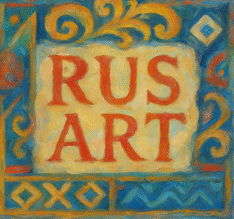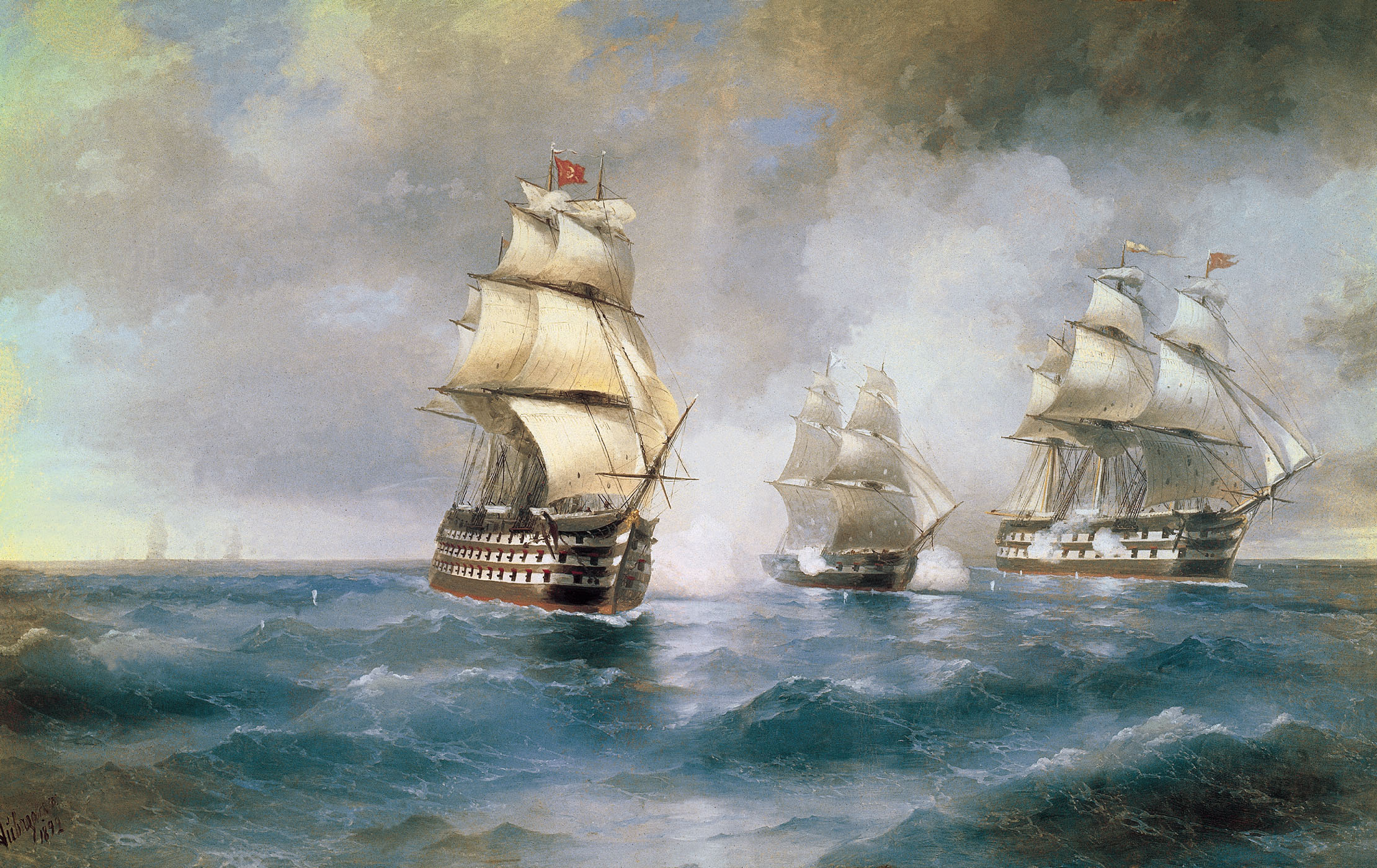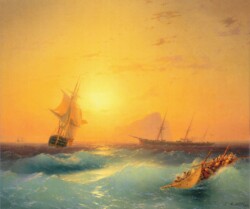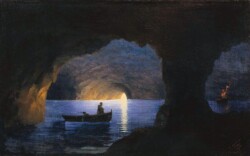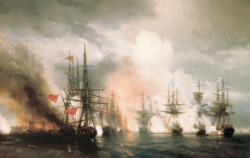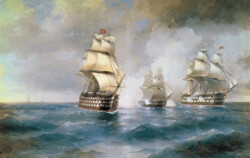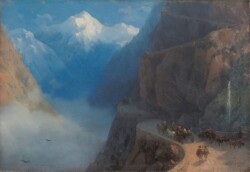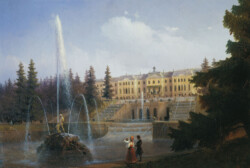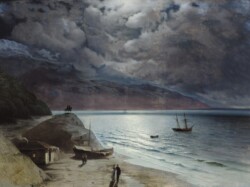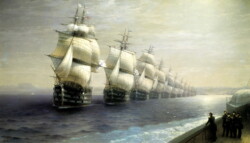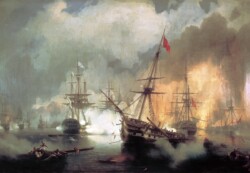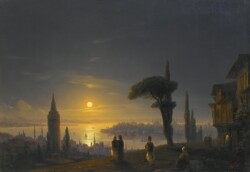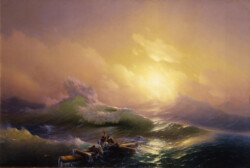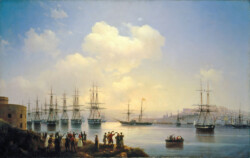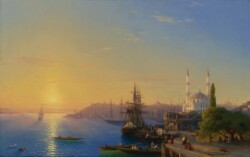Ivan Konstantinovich Aivazovsky was one of the most prolific and famous marine painters of the nineteenth century. Aivazovsky, born in 1817 in Feodosia, a Black Sea port town in Crimea, painted more than 6,000 artworks portraying the glory and the elegance of the sea. His highly stylized, dramatic, and romantic seascapes fetched him an international reputation and rendered him one of the most famous maritime painters of all time.
Aivazovsky’s Early Life and Training
Konstantin Aivazian, father of Aivazovsky, was an Armenian merchant, while his wife Ripsimé Gaidzakian was of Armenian origin. Right from childhood, Aivazovsky exhibited a great capacity for drawing and painting. As a child, he would often sketch the bustling harbor and ships coming and going from the port of Feodosia.
In 1833, at 16 years old, Aivazovsky got enrolled at the Imperial Academy of Arts in St.Petersburg one of the best fine art schools in Russia. There, he studied under the prominent Russian landscape painter Maxim Vorobiev, who recognized Aivazovsky’s exceptional abilities and served as his mentor. Vorobiev encouraged Aivazovsky to focus on painting the sea, which would become the young artist’s lifelong passion and subject matter.
Aivazovsky obtained the gold medal along with the title of ‘academician’ (the highest possible grade in an artist’s career in that day) from the Academy in 1837. This enabled the use of funding to take him on an EU-mentored tour of Europe, visiting Italy, the Netherlands, Germany, and France in order to develop his practise further.
The Emergence of Aivazovsky’s Signature Style
Upon his return to Russia in 1840, Aivazovsky started work on a prolific oeuvre of marine paintings which would derive the title of ‘finest marine painter of his time’. His early paintings, such as “The Bay of Naples at Moonlight” (1841) and “Calm Sea” (1844), displayed a remarkable mastery of light and color, as well as a dramatic flair for capturing the power and dynamism of the sea.
Aivazovsky’s style changed throughout his long and eventful career, however some characteristic features persisted throughout his career. He possessed the incredible talent to portray the fluid, elusive characteristics of water and sky, from the luminous shine of the sun on glassy water to the immense, frothing spectacle of fierce storms. His palette consisted mainly of blue, green, and white tones which he employed in a hypnotizing way to achieve an astonishing sense of depth and atmosphere.
Aivazovsky’s works also commonly included dramatic, story-driven scenes, including shipwrecks, naval battles, and rescues. These studies moved along the Romantic fascination with the power of nature, the powerlessness of human being to the power of the sea. Paintings like “The Ninth Wave” (1850) and “The Shipwreck” (1854) became some of Aivazovsky’s most iconic and beloved works.
Royal Patronage and International Fame
Aivazovsky’s artistry and prodigious output soon earned him fame across both Russia and internationally. In 1836, admitted to the Imperial Academy of Arts on the status of “academician” – the ultimate accolade that the academy could bestow. Over the course of his career, he received numerous other accolades, including being named a professor at the Academy and being awarded the title of “Imperial Painter” by Tsar Nicholas I.
Aivazovsky’s works were highly coveted by Russian aristocracy and European aristocracy. He was, for example, commissioned by the Russian imperial family, and by especially rich patrons in France, Great Britain and Italy. His works were shown to overwhelming popularity in some of the most renowned venues, like Paris Salon, Royal Academy of Arts in London and Venice Biennale.
The artist’s international fame continued to increase for the rest of the 1840s and 1850s. He visited Constantinople (Istanbul) in 1842, at an invitation by the Ottoman Sultan, and painted there a series of monumental paintings on naval battles and seascapes. The works of these paintings were met with great joy and Aivazovsky was decorated with the Order of the Medjidie, one of the highest Ottoman ranks of privileges.
Aivazovsky’s Enduring Legacy
By the later stages of his career, Aivazovsky had become one of the most celebrated and sought-after artists in Europe. He kept a high rate of production, producing more than 6,000 works of art in his career. Not only oil paintings, he produced etchings, lithographs and watercolours, many of which were printed in books and portfolios.
Aivazovsky’s influence extended far beyond his own lifetime. His dramatic, Romantic seascapes helped shape the public’s perception of the power and beauty of the natural world. Many of his paintings, such as “The Ninth Wave” and “Shipwreck”, became enduring icons of 19th-century art.
The artist’s oeuvre, however, shown a sizeable influence also on subsequent generations of marine and landscape painters, in Russia and abroad. His control over light, colour and atmosphere can be detected in the works of artists as diverse as the French impressionist Claude Monet and the Russian Realist Ivan Shishkin.
Currently, Aivazovsky’s paintings are kept in the most prestigious art institutions in the world, such as, the Hermitage Museum, St. Petersburg, the Tretyakov Gallery, Moscow, or the Metropolitan Museum of Art, New York. His achievements continue to amaze and amaze audiences all over the world more than a century and a half after his death in 1900.
The everlasting attractiveness of Aivazovsky art is its capacity to move the viewer into the evolving, dynamic world of the seascape. Whether depicting a raging storm or a tranquil, moonlit harbor, his paintings evoke a profound sense of the sublime power of nature. By means of the masterful combination of light, colour, and composition, Aivazovsky was able to bring to his seascapes an element of the dramatic, emotional and the eternal beauty that has placed his name after that of any other painter of the sea among the world’s greatest marine artists of all time.
